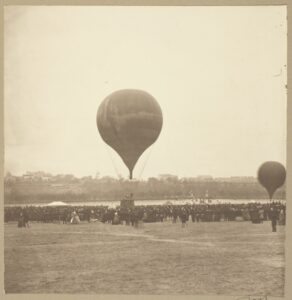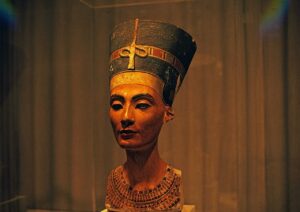The Yeti, it seems, has shown its elusive head, or rather foot, once again.
Today, Mingma G, a respected Sherpa climber and IFMGA guide, shared two photos of an alleged Yeti print. Tulku Ngawang Lapsum of Beding village in the Rolwaling Valley took the photos “in the vicinity of the holy cave of Urgen Drukang in Na village,” reported Mingma G.
As Eric Shipton and Reinhold Messner did in the past, Mingma G does not actually express his own views on the Abominable Snowman. He just says that people in the Rolwaling Valley where he lives believe in the creature, “and our elderly generations have seen it.”
“These footprints are around two feet apart,” Mingma G said, citing witnesses. “[They are] quite distinct from those of humans and other animals such as bears. As locals, we believe they must be those of a Yeti.”

Alleged Yeti prints from Rolwaling last Saturday. Photo: Tulku Ngawang Lapsum, shared on Facebook by Mingma G.
Mingma G then recalled the most famous early report of the Yeti in Rolwaling. In 1951, Eric Shipton and his party were crossing the Melung La, the pass above Beding village, when he saw similar prints.
70 years of Yeti and men
At the time, Shipton’s prestige as an explorer placed him above an easily fooled dupe or a person prone to believe in local superstitions. The print was a U.S. size 9.5 — hardly a Bigfoot. At the same time, the print was nearly twice as broad as a typical human footprint, according to Shipton’s partner Michael Ward. The big toe also seemed more thumb-like, like a primate’s.
“We noticed that whenever a narrow six-inch-wide crevasse was crossed, there seemed to be claw marks in the snow at the end of the toe,” Ward wrote.

How it all began: The famous image, shot by Eric Shipton in 1951, with an ice axe head for comparison.
Shipton’s photos became instantly famous. Audiences enthusiastically welcomed this Himalayan representative of similar elusive creatures around the world — Bigfoot or the Sasquatch in the U.S., Kunk in the Andes, Yowie in Australia, and Chuchuna in Siberia. Even in the thick beech forests of Spain’s Basque Country, the Basajaun lurks as “the guardian of the forest”.
In 1958, Belgian cartoonist Herge included a Yeti in a comic book about his famous character Tintin in Tibet. Even before that, the Americans had King Kong from the 1930s film in their minds, though of course, he was of a different order of magnitude. But gradually, the Yeti, or Abominable Snowman, became part of the Himalaya’s imaginarium.

The final scene of the Tintin in Tibet comic book.
A six-month search
In 1954, a few years after Shipton’s discovery, oilman Tom Slick became obsessed with the Yeti after reading an article in the Daily Mail. Slick launched several search expeditions, including one that lasted six months. It had 500 porters and bloodhounds to sniff out the mysterious creature.
Even after the turn of the millennium, interest in the Yeti has not entirely waned. In 2008, Yoshiteru Takashi led the Nippon Yeti project to the region around Dhaulagiri IV. They even obtained some photos of 45cm-long prints but failed to film any actual Yeti. Nevertheless, they returned convinced that the creature is real. “The footprints and the stories the locals tell make us sure that it is not imaginary,” Takashi said.

The (slimmer) Yeti print from the 2008 Japanese expedition.
Climbers roaming the Himalaya of course enjoy listening to local stories and photographing the Yeti relics kept at several monasteries in the Khumbu — even though contemporary DNA tests have shown these relics belong to less legendary creatures.
As for bumping into a Yeti, no Westerner has had any luck, with one remarkable exception. In 1986, while exploring the head of Mekong River in Tibet, a Tyrolean climber saw a standing, ape-like animal at sunset.
“The creature towered menacingly, its face a gray shadow, its body a black outline,” the climber recalled. “Covered with hair, it stood upright on two short legs and had powerful arms.” He took no pictures, and the silhouette was not completely clear with the setting sun blindingly behind it.
Enter Messner
The stunned climber was none other than Reinhold Messner. Afterward, Messner researched the matter thoroughly and gathered enough info for a book entitled, My Quest for Yeti: Confronting the Himalayas’ Deepest Mystery.
Messner suggested that the creature might have been a Tibetan bear, which lives mostly alone and whose fur may vary in color. “However, for the Tibetan people, the Yeti is real and significant, as symbols and totems are,” Messner told this writer years ago, at the book’s launch in 2000.
Daniel C. Taylor reached a similar conclusion in his 2017 book, Yeti: The Ecology of a Mystery. Taylor was interviewed about his obsession with the Yeti in National Geographic, in which he attributes the prints to an Asian black bear.
The physical Yeti vs the symbolic Yeti
The physical Yeti may be a bear, but there is a second, symbolic Yeti in which humans muse about their relationship with the wilderness and the unseen.
Descriptions of the Yeti vary but mainly peg the creature as a five-foot-tall ape/humanoid creature that walks on two legs and emits a high-pitched sound.
However, with all these enthusiastic searches, and no conclusive evidence, the odds of the physical Yeti turning up are lengthening. Someone once wrote, half tongue-in-cheek, about one of the Yeti’s cousins in America’s Pacific Northwest: “The main problem associated with the phenomenon of the Sasquatch is proof of its physical existence.”
Anthropologists doubt that an ape (all of which are basically vegetarians) could survive in an environment so hostile to plant growth. The rare sightings have always centred around a single individual, never family groups.
And no one has happened to spot a Yeti while having a camera at hand. As myth debunker, John Russell Napier wrote back in 1972, “The sort of situation where human or mechanical faults, unaccountably, come between the photographer and world renown is another of those clichés so characteristic of life in the Goblin Universe. How many UFOs or Loch Ness Monsters would now be immortalized if the camera hadn’t been left in the car?”
In the age of drones and smartphones, the Yeti will have to be even more careful to keep its secret hidden and its legend alive.






